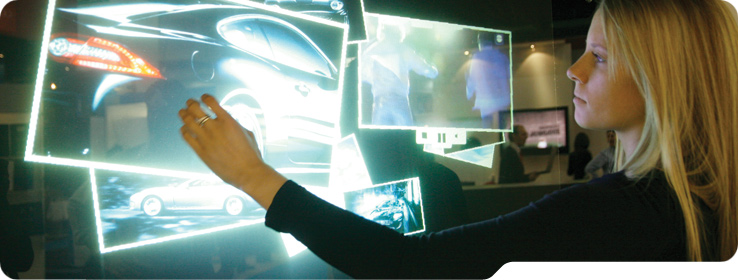
Multi touch, as the word itself suggests, refers to the ability of touchscreen displays to recognize two or more points of contact on the surface simultaneously. A constant tracking of multi touch points allowed mobile displays to understand and recognize gestures which enabled advance functions like pinch and zoom on multi touch displays. There are two types of touchscreen displays that we see on regular mobile or other portable displays. These are, resistive touchscreen displays and capacitive touchscreen displays. Multi touch sensing doesn’t work with resistive touchscreens and only work with capacitive touchscreens. All high-end devices now come inherited with capacitive multi touch displays.

Consumer tech giant Apple is considered the pioneer of multi touch technology – their success with multi touch display on the iPhone transcended into a rage and is now adapted by many manufacturers across various platforms. Apple has also got the technology to its other devices like the iPad, iPod and Macs.
Between the Apple’s iPhone and Microsoft's interactive multi touch surface (table), multi-touch displays become all the rage early on. But now the technology has become common and more advanced. As a result, many players in the industry have devised their versions of multi touch and interactive displays. Interactive multi touch displays may have started off as small displays, but that’s not a constraint anymore. Large multi touch displays that let users enjoy the interactivity of a display on a more public platform have also been created. Multi touch displays as large as 82-inches have been created.
Multi touch has even broken shackles of touch and has reached a space where technology has given its place to simple hand gestures and mind controlled methods of input. Customization of multi touch interface has thus made interactive wall displays and interactive retail windows a possibility. Large multi touch displays isn’t the only evolution, researchers worldwide are steadily working on making multi touch displays flexible enough to be rolled into the pocket. Companies like HP et al. have some prototypes of the technology ready, which means we could soon have interactive multi touch phones and computers folded or rolled up inside our pockets.

Multiple uses of multi touch as a new form of ‘input’ in devices is a reminder that we haven’t just got used to using multi touch displays and interactive displays on our consumer electronics. The fact is that we have now accepted multi touch as the new form of technology, which will make the consumer technology more interactive and efficient.
